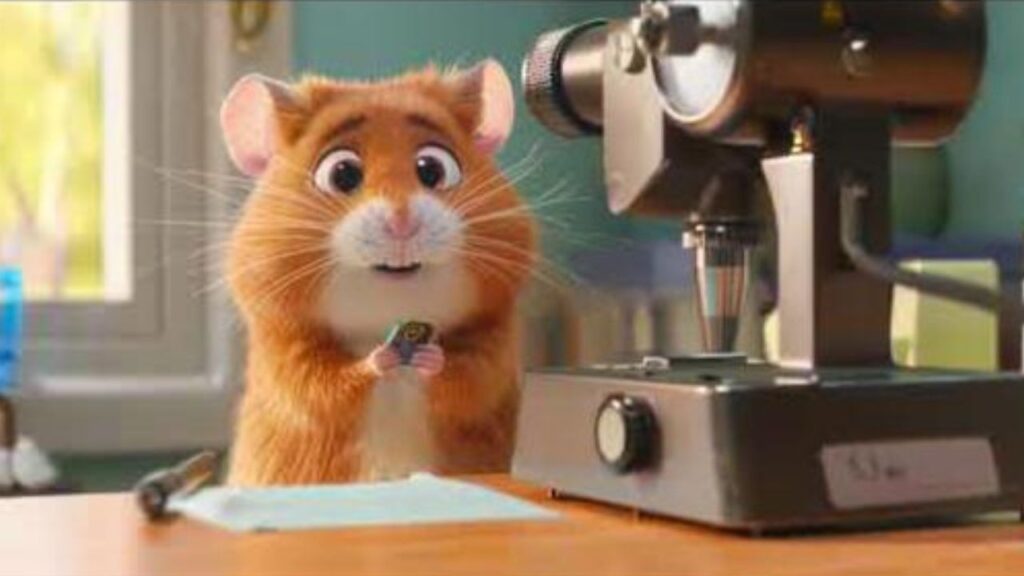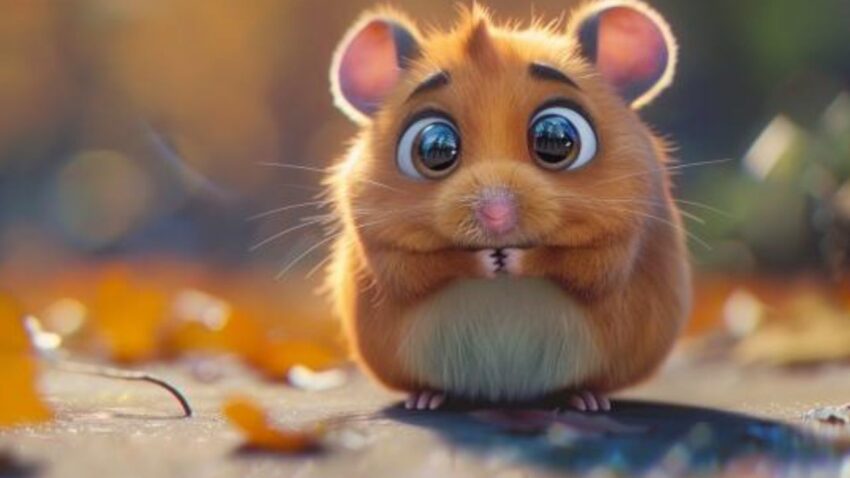TL;DR Summary
No, hamsters cannot intentionally make their eyes fall out. However, they can suffer from a condition known as eye proptosis, where the eye may bulge or protrude abnormally, which can sometimes lead to the eye becoming dislodged from the socket due to severe trauma or pressure from underlying health issues. It’s a rare and serious condition that requires immediate veterinary attention. To prevent such issues, ensure a safe habitat, handle your hamster gently, provide a nutritious diet, and schedule regular veterinary check-ups. Always stay observant for any signs of eye distress and act quickly if something seems amiss. Remember, proactive and informed care keeps our hamsters healthy and their eyes bright—because a happy hamster is a wheel-y happy you!
Hamsters, with their beady eyes and curious glances, capture our hearts, but as responsible pet owners, we’re sometimes faced with peculiar and worrying questions regarding their health. One such question that might catch us off guard is: Can hamsters’ eyes fall out? This topic, while it may sound more like a myth or a fear-inducing rumor, is rooted in a genuine health concern known as eye proptosis, and it deserves a closer look for the sake of our tiny friends’ wellbeing.
Why Eye Health Matters in Hamsters
Understanding the implications of ocular health in hamsters is crucial. Their eyes not only play a vital role in their daily navigation but also act as indicators of their overall health. Any abnormalities, such as the eye protruding or appearing to ‘fall out’, could point to serious health issues that require immediate attention. Addressing this concern head-on allows us to provide our furry pals with the best possible care.
The Reality Behind Hamster Eye Proptosis
Eye proptosis may be an alarming term, but what does it actually mean for your hamster? In the following sections, we’ll break down what eye proptosis is, including its causes, symptoms, and preventative measures. As alarming as it sounds, understanding this condition is the first step in protecting our pets from such a distressing fate. By educating ourselves, we can stay vigilant for the signs and symptoms, ensuring our hamsters’ eyes stay right where they should be—in the loving gaze of their caretakers.
Embarking on this journey of hamster health education, we aim not just to address the unsettling question of whether hamster eyes can fall out but to nurture an environment of care and knowledge. Join us as we delve into the science behind hamster ocular health, armed with the reassurance that our adorable companions are in safe hands.
Understanding Hamster Eye Health

The eyes of a hamster are critical not just for their ability to navigate their tiny world, but also as indicators of their overall health. A deep understanding of the anatomy of these creatures’ eyes and the common issues that can affect them is vital for any hamster owner.
Anatomy of a Hamster’s Eye
The hamster eye is a complex organ that functions similarly to a human eye. Like our eyes, the hamster eye has a cornea, lens, retina, and optic nerve among other structures, each serving a critical function in the process of vision. The cornea is the clear, protective outer layer. It works with the lens, situated just behind the pupil, to focus light onto the retina at the back of the eye. The retina receives the light and converts it into nerve signals that are sent to the brain via the optic nerve. This process allows hamsters to see their environment, although not as clearly as humans since they are nearsighted and have poorer color vision.
Hamsters also have a third eyelid, known as the nictitating membrane, which acts as an additional protective layer. This membrane can sweep across the eye to remove debris or lubricate the eye, which is particularly useful when hamsters are burrowing.
Common Eye Issues in Hamsters
Hamsters can suffer from various eye health issues, some of which may alarm their owners. Common conditions include:
- Conjunctivitis: This is an inflammation of the conjunctiva, the tissue lining the eyes and eyelids. It can be caused by bacterial infections, allergens, or irritants. Symptoms include redness, swelling, discharge, and the hamster scratching at its eye.
- Cataracts: Just like in humans, hamsters can develop cataracts where the lens becomes cloudy, leading to impaired vision. This condition is more common in older hamsters and can be identified by a noticeable white film over the eye.
- Cherry Eye: This occurs when the gland under the third eyelid prolapses and becomes visible, appearing as a red mass. It can be caused by stress, infection, or even genetics.
- Eye Proptosis: Although rare, eye proptosis is when the eye protrudes from the socket, usually due to injury, and looks as though it might ‘fall out’. This condition is an emergency and requires immediate veterinary care.
- Dry Eye: The lack of adequate tear production can lead to dry eyes, causing discomfort and can lead to more serious issues if not treated.
Understanding these conditions is the first step in ensuring your hamster does not suffer from any avoidable eye-related health issues. Regular checks can often prevent complications, and early intervention can make a significant difference in treatment outcomes. It’s vital for hamster owners to be aware of their pets’ eye health and to seek veterinary assistance when they suspect something is amiss.
With a foundational understanding of hamster eye anatomy and an awareness of the common eye issues that can affect these little creatures, owners are better prepared to safeguard the ocular health of their furry companions. Remember, early detection and treatment can be key in managing these conditions effectively.
The Phenomenon of Eye Proptosis in Hamsters

When delving into the depths of hamster healthcare, certain conditions stand out for their severity and the level of concern they raise among pet owners. Eye proptosis is one such condition, a term that might sound like it’s plucked from a science fiction novel but is very much a reality in the world of veterinary medicine. Understanding this condition is critical for any hamster owner, as it can be both alarming to witness and urgent to treat.
What is Eye Proptosis?
Proptosis refers to the displacement of the eye from the eye socket, leading to a protrusion that is unnaturally pronounced. In hamsters, this condition can occur in one or both eyes and can resemble a disconcerting scenario where the eye appears to ‘fall out’. While this is rare, it is essential to recognize that when a hamster’s eye is protruding, the situation is serious and necessitates immediate veterinary attention.
Causes of Eye Proptosis in Hamsters
Several factors can contribute to the development of eye proptosis in hamsters. Trauma is a leading cause, whether it’s from an accidental fall, rough handling, or a scuffle with a cage mate. Additionally, an underlying medical condition, such as a tumor behind the eye, glaucoma, or even a severe infection, can create enough pressure to push the eye outward. It’s also possible that genetic predisposition or anatomical abnormalities can leave some hamsters more susceptible to this condition.
Symptoms and Diagnosis
The symptoms of eye proptosis are typically unmistakable; the affected hamster’s eye will be bulging, and there may be damage to the surrounding tissue or eyelids. The hamster may show signs of distress or pain, such as pawing at their face or having difficulty navigating their environment. Diagnosis is generally made through a physical examination by a veterinarian. However, further tests such as x-rays or ultrasounds may be required to determine the underlying cause of the proptosis.
Treatment and Prevention
Treatment for eye proptosis must be prompt to increase the chances of saving the eye and preserving vision. It often involves surgery to reposition the eye back into the socket, followed by medication to address any infection and reduce inflammation. In severe cases, if the eye is too damaged, surgical removal might be the only option to prevent further pain and complications.
Prevention of eye proptosis involves minimizing risks; this includes ensuring a safe habitat to prevent falls and injuries, gentle handling to avoid trauma, and regular health checks to catch and treat any conditions that could lead to eye issues. Moreover, monitoring hamster behavior and interaction can prevent aggressive encounters that may lead to injuries.
While the thought of eye proptosis is undoubtedly distressing, understanding what it is, its causes, and the signs to look for can prepare hamster owners to act swiftly should this condition arise. With immediate veterinary care, the prognosis can be optimistic, and while prevention is not always possible, awareness is the key to protection.
Addressing Myths and Misconceptions

In the realm of hamster care, misinformation can spread as quickly as our little friends can scamper through their tubes. When it comes to their eye health, particularly the topic of eyes ‘falling out’, a host of myths and misconceptions can lead to undue worry or, conversely, a lack of appropriate concern. Let’s address some of these myths and replace them with solid, whisker-truths.
Myth: Hamsters Can Pop Their Eyes Out at Will
One of the more outlandish myths is that hamsters have the ability to intentionally pop their eyes out. This is entirely untrue. Hamsters do not have any sort of biological or muscular mechanism that would allow them to extrude their eyes voluntarily. Proptosis is always an involuntary condition and often a result of an injury, pressure, or illness.
Myth: A Proptosed Eye Means the Hamster is Beyond Help
Another common misconception is the belief that if a hamster’s eye has proptosed, there’s nothing that can be done and the situation is hopeless. On the contrary, with prompt and proper veterinary care, even a proptosed eye can sometimes be treated effectively, and the hamster can continue to live a healthy life. Treatment options vary depending on the severity, but they often include repositioning the eye or surgery. Veterinarians specializing in exotic pets are best suited to provide the necessary care.
Misconception: Proptosis is Contagious
Proptosis is a condition and not a disease; thus, it is not contagious. If you have multiple hamsters and one suffers from proptosis, there’s no risk of it spreading to the others. However, it’s essential to understand why the proptosis occurred in the first place—whether due to injury or illness—as some underlying causes may have implications for your other pets.
Myth: All Eye Bulging is Proptosis
Sometimes, a hamster’s eye may appear slightly bulging due to stress, high blood pressure, or other factors. Not all bulging is a sign of proptosis. It’s essential to observe your hamster’s behavior and overall health condition, and consult with a vet for an accurate diagnosis. Understanding the various reasons for eye bulging can prevent unnecessary panic and ensure that your hamster receives the right treatment for their specific condition.
By debunking these myths and correcting misconceptions, hamster owners can foster a better understanding of their pets’ health and wellbeing. Remember, knowledge is power—especially when it comes to caring for our tiny companions. Regularly observing your hamster and seeking veterinary advice when something seems amiss is the best strategy to keep these myths at bay.
Whisker Tips: Maintaining Your Hamster’s Eye Health

Ensuring that your hamster’s eyes remain as sparkling and expressive as they are meant to be involves a bit more than just wishful thinking. In this section of ‘Whisker Tips,’ I will guide you through practical advice and preventative measures to help maintain the ocular health of your furry sidekick. With a twinkle in their eye and a dash of preventative care, let’s dive into keeping those little peepers in tip-top shape.
Regular Health Check-Ups
Schedule Regular Vet Visits
Just like humans, hamsters benefit greatly from regular health check-ups. A visit to the vet can help catch early signs of eye problems and prevent more serious conditions from developing. Mark your calendar for these essential check-ups, and keep an eye out for any changes in your hamster’s eyes between visits.
Keep an Eye on the Eyes
A simple yet effective practice is to visually check your hamster’s eyes during your daily interactions. Look for clarity, brightness, and symmetry. Any cloudiness, discharge, or signs of irritation should be a red flag prompting a visit to your veterinarian.
A Safe and Comfortable Habitat
Avoid Sharp Objects and Unsafe Toys
Your hamster’s cage is their kingdom, and it should be as safe as a royal palace. Remove any sharp objects that could potentially injure their eyes and ensure that all toys and accessories are hamster-safe.
Proper Bedding Material
Choose appropriate bedding for your hamster’s cage that is dust-free to avoid irritation or allergic reactions. Bedding should be soft and absorbent to prevent particles from becoming lodged in their eyes.
Balanced Diet and Hydration
Nutritious Food
A balanced diet is vital for overall health, including eye health. Ensure that your hamster has access to high-quality pellets, fresh fruits, and vegetables that are rich in vitamins and minerals to support their vision.
Ample Fresh Water
Hydration is just as important as nutrition. Always provide fresh, clean water for your hamster, as dehydration can lead to various health issues, including those affecting the eyes.
Stress Reduction
Peaceful Environment
Keep your hamster’s living area in a quiet, calm part of your home. Stress can lead to health problems, some of which may manifest in or around the eye area.
Familiarity and Routine
Hamsters are creatures of habit. Maintaining a routine for feeding, playtime, and cleaning can help prevent stress-related health issues.
Interaction and Handling
Gentle Handling
When you handle your hamster, do so with gentle care to avoid any undue pressure on their body or head, which could lead to eye issues.
Monitoring Social Interactions
If you have more than one hamster, keep a close watch on their interactions. Aggressive behavior could result in injuries to the eyes.
By incorporating these Whisker Tips into your hamster care routine, you can play a significant role in ensuring that your hamster’s eyes remain as healthy as the rest of their furry little selves. Preventative measures are the key to avoiding eye issues and guaranteeing that those tiny, twinkle-filled orbs continue to brighten your day.
Conclusion

In the delicate world of hamster health, the subject of eye proptosis stands out as both significant and sensitive. Through our comprehensive exploration of this condition, we’ve learned that while the idea of a hamster’s eye ‘falling out’ might seem far-fetched, the reality of eye proptosis is a genuine concern that demands awareness and understanding.
We have unraveled the threads of this phenomenon, understanding what eye proptosis is, uncovering its causes, recognizing its symptoms, and discussing the crucial steps required for treatment and prevention. This knowledge is not just academic; it’s a cornerstone of conscientious pet ownership, providing us with the power to recognize and react responsibly to the signs of eye distress in our hamsters.
The commitment to hamster health extends beyond knowing what to do in a crisis—it’s a holistic approach that includes regular vet check-ups, safe habitats, proper nutrition, and minimizing stress for our petite pals. It’s about creating a bond with our hamsters that’s rooted in care and attentiveness, ensuring that we’re as tuned into their health as they are to the spinning of their exercise wheels.
Let this article serve as a testament to our dedication to keeping our hamsters not just wheel-running but wheel-thriving, with bright eyes and full hearts. The journey of pet ownership is filled with learning curves and unexpected challenges, but equipped with the right knowledge and an open heart, we can face these challenges head-on.
So, as we bring our discussion to a close, let’s reaffirm our commitment to the health and happiness of our furry friends. By staying vigilant and proactive in our care, we contribute to the well-being of our hamsters—one tiny heartbeat at a time.
And, as always, a happy hamster is a wheel-y happy you!




